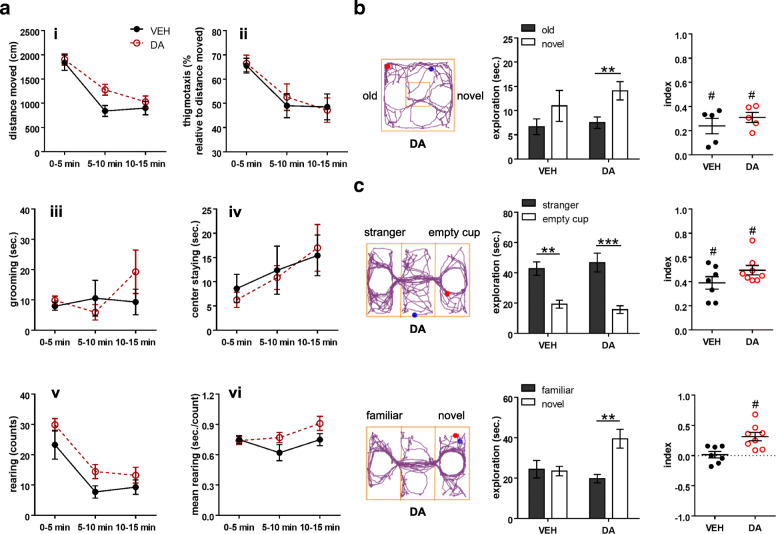Fig. 6.
Behavioral effects of intranasal dopamine on Fmr1-KO mice. a Behaviors measured in the open field test. The dopamine (DA)-treated group showed comparable distance travelled (i), thigmotaxis (ii), self-grooming (iii), center staying (iv), counts of rearing (v), and average duration of rearing (vi) to the vehicle (VEH)-treated group. b Behaviors assessed in the object-based attention test. An example of movement tracking of a DA-treated animal is shown. Blue and red dots indicate the start and end points of a test trial, respectively. The DA-treated animals exhibited the preference toward the novel object, although both groups had positive values of the index. Index = [time spent on the novel object - time spent on the old object] / total exploration time. c Behaviors evaluated in the three-chamber social test. Examples of movement tracking of a DA-treated animal in a sociability and a social novelty trial are displayed. Blue and red dots indicate the start and end points of each trial, respectively. In the sociability trial (upper panels), both groups displayed social preference toward the stranger mouse and had positive values of the sociable index. Index = [time for exploring the stranger mouse - time for exploring the empty cup] / total exploration time. In the social novelty trial (bottom panels), the DA-treated group explored the novel stranger more than the familiar one, whereas the VEH-treated group did not. The DA-treated group thus had higher values of the social novelty index. Index = [time for exploring the novel mouse - time for exploring the familiar mouse] / total exploration time. n = 7–9 mice/group (2–4 mice were excluded in the object-based attention test due to < 10 s exploration). **p < 0.01, ***p < 0.001, compared to the respective values. #p < 0.05, compared to 0 by one sample t-test

